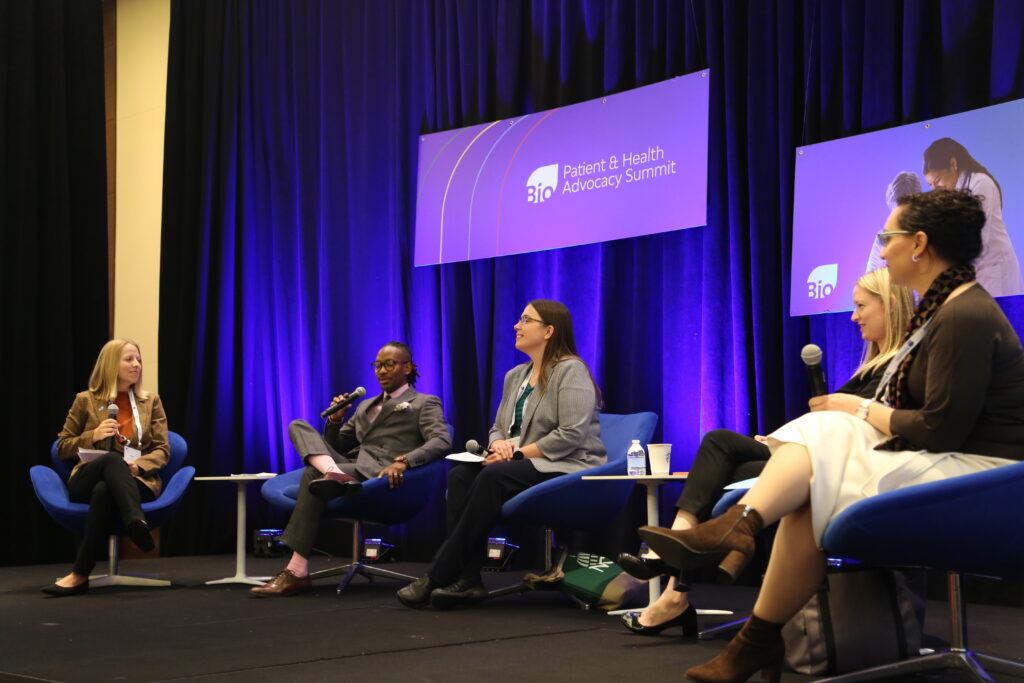Washington, D.C., is all about who you know—and coalitions of people and groups with the same goals are key to getting stuff done. During the BIO Patient and Health Advocacy Summit on October 27, several leaders of patient advocacy coalitions discussed best practices (and pitfalls) in effectively building and leading coalitions.
But how do you build a well-run coalition in the first place?
Governance and structure are critically important, speakers agreed.
It’s about “really understanding your purpose,” said Michele Guadalupe, Associate Director of Advocacy and Access for the National Eczema Association, which represents the 31 million Americans living with eczema.
Transparency, meeting regularly with defined objectives for meetings, and bringing in experts are also important elements, continued Guadalupe.
“One of the most important things is to have a structure,” added Anna Hyde, Vice President of Advocacy and Access for the Arthritis Foundation, the largest nonprofit dedicated to arthritis. This includes written bylaws, especially regarding membership or governance, “so it’s very clear, and that way it can be very objective.”
To sum it up: it’s about “structure, but the ability to evolve,” said moderator Ashley John, BIO’s Director of Patient Advocacy and Alliances.
To build consensus, you need to build trust
“The key point about having a really successful coalition is to have stakeholders across the spectrum…all saying the same thing,” said Alexandra Bennewith, VP of Government Relations for the United Spinal Association, which represents people with spinal cord injuries and disorders (SCI/D), including veterans. “If you have stakeholders in the same space—different stakeholders—all saying the same thing. you can move forward a lot quicker more quickly.”
“If your voice is cohesive, if you do have a consensus position on something, that’s just going to be more effective on the Hill,” noted Guadalupe later in the discussion. “The worst thing an office wants is to hear different points of view from the same sector.”
And to build consensus, you need to build trust.
Speaking about Let My Doctors Decide—a coalition that works to ensure health decisions are not made by pharmacy benefit managers (PBMs) but by patients and their providers—Quardricos Driskell, Vice President of Policy and Government Affairs for the Autoimmune Association, spoke about the importance of engaging every coalition member.
“I did reach out to every member of the coalition, to ensure that they felt a part of the coalition,” he said, “but also [to] solicit their ideas and to figure out how best can they be good stakeholders and what is a true partnership.”
This “builds trust, which makes it easier to manage a multitude of stakeholders with a common goal,” continued Driskell.
Now, as part of the effort to build the National Coalition of Autoimmune Patient Groups (NCAPG), Driskell is seeing the importance of trust when it comes to “coalescing around an idea.”
“It’s also understanding past history and it’s getting people on board excited and empowered,” he noted.
What does success look like for patient advocacy coalitions?
“Obviously for all of us, at the end of the day, we would love to have a bill signed into law so that we can have those protections for our patients,” said National Eczema Association’s Guadalupe. “But we know sometimes with politics and with everything the way it is, every state every effort can look quite different.”
But even without legislation, a coalition can still be a success if you get the chance to educate policymakers, media, and the public about patients’ stories, which can lead to “new champions” that will fight on your behalf in the future.
“You take any success, any win, that you get,” said United Spinal Association’s Bennewith. “It’s more like a marathon, not a sprint,” said United Spinal Association’s Bennewith, noting the “caveat” of the “once-in-100-years pandemic, where things do happen a little bit more quickly.”
“Many people have been working for decades on reimbursing telehealth in Medicare, and it took a pandemic to realize that you can do that. So, there were some things that happened like that,” she continued, “and other times, a lot of it is just hard work behind the scenes.”
Even if you don’t pass the legislation, “you’ve still made progress. You’ve had the visibility, the awareness. You’ve given people opportunities to engage,” said Arthritis Foundation’s Hyde. “We are helping our patients find their voice and feel empowered,” and many find it rewarding to meet with their legislators and connect with patients from other disease areas.
“So, I would measure that as success, even if it doesn’t result in the co-sponsorship that you’re looking for,” she said.
“I think one word is key,” said Driskell, “And that’s allyship. Most social movements in this country have occurred…because of allyship.”




